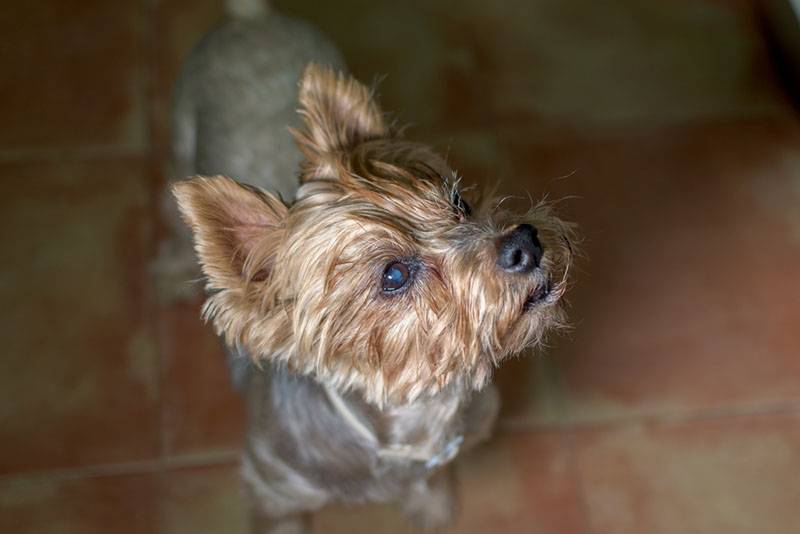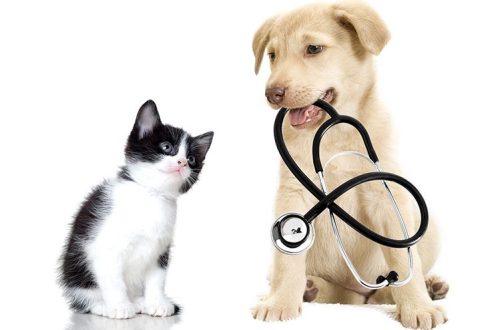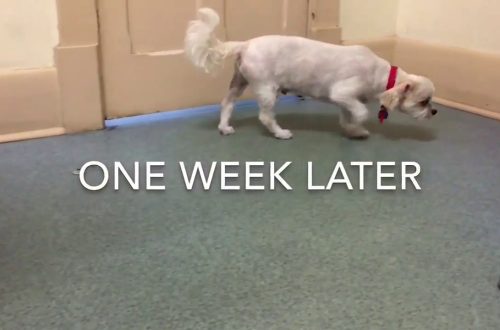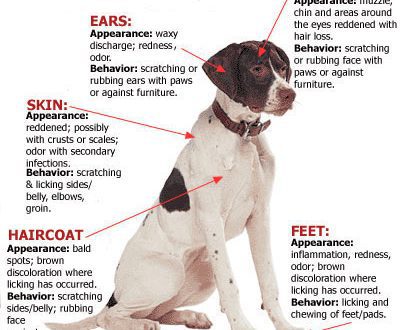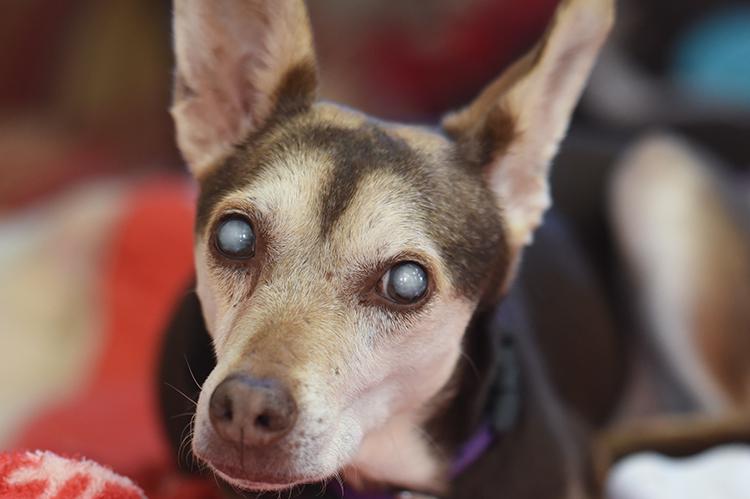
Cataracts in Dogs – Signs and Treatment

Contents
About cataracts in dogs
This disease is a common cause of partial or complete blindness in dogs. Cataracts are being diagnosed with increasing frequency as pets live longer.
Approximately 2% of animals are diagnosed with cataracts, and it can be caused by genetics, age, or the influence of other diseases.
Normally, the lens of a dog’s eye is completely transparent. He is behind
corneaTransparent dome on the eye and the iris and focuses light on the back of the eye, the retina.
The lens becomes cloudy due to illness, old age, genetics.
It usually appears as a white, bluish, or cream cloud in the eye and ranges in size from as small as a pinprick to covering the entire eye. The size of the coating directly affects how the animal sees.
Cataracts are progressive, meaning they start out very small and barely affect vision, but will eventually grow and cause serious problems. A cataract that covers the entire eye can cause blindness.
It is important not to confuse cataracts with nuclear sclerosis, a translucent blue-white change in the lens in older individuals. Nuclear sclerosis does not appear to affect the dog’s vision and is considered a normal aging change in the canine eye.
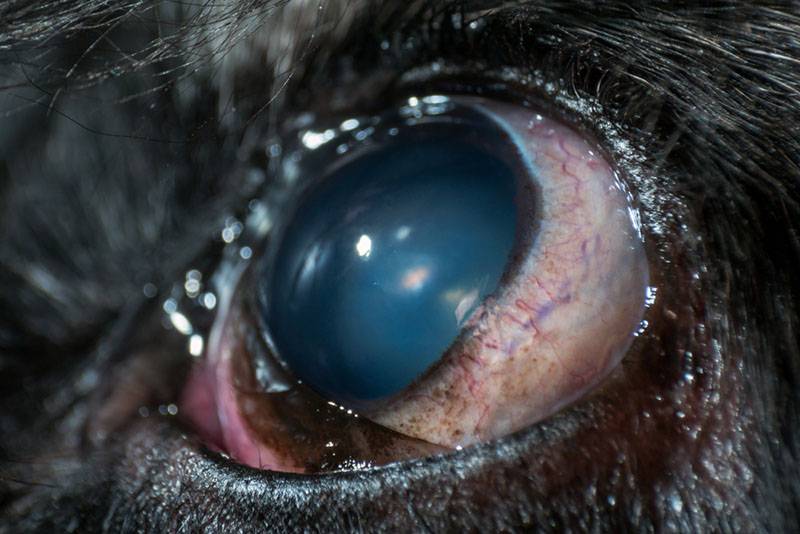
Causes of the disease
Eye cataracts have several possible causes:
Inherited from parents (genetic cataract can start as early as 6 months of age)
Changes in lens nutrition (caused by uveitis or eye inflammation)
Diabetes, which affects the osmotic balance in the lens of the eye
Injury from a blunt or sharp object that breaks the anterior lens capsule

Exposure to toxic substances
Radiation (associated with treatment in the head area)
Electric shock
Nutrition (unbalanced food when replacing puppy milk).
Hereditary or genetic cataract is the most common form. It is called juvenile cataract. This disease affects younger individuals than most other forms of cataract.
Yorkies are the most common breed to develop age-related cataracts.
Dogs with diabetes also commonly suffer from lens opacity. Cataracts in diabetic pets can appear very suddenly and cause pain and further damage to the eyes in just a few days.
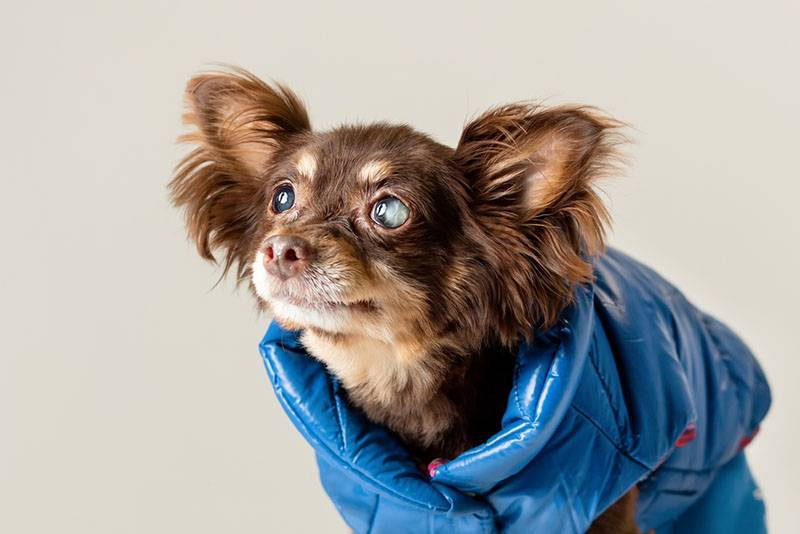
Symptoms and signs of cataracts in dogs
The first symptom of the disease is usually cloudy eyes.
If cataracts begin to interfere with vision, you may notice that your pet is behaving strangely and seeing poorly. However, many pets quickly learn to move around their home and walking path, so you may not notice symptoms of blindness until the pet moves to a new location or moves furniture around the house. Reluctance to jump into a car is a common sign of decreased visual acuity.
If the cataract is causing other eye problems, such as inflammation, high blood pressure, or even injury, you may notice these signs. They are manifested by the release of excess tears and staining of tears, itching of the eyes may also appear, the animal will begin to rub them.
A cataract in a dog can spread to one eye or two.
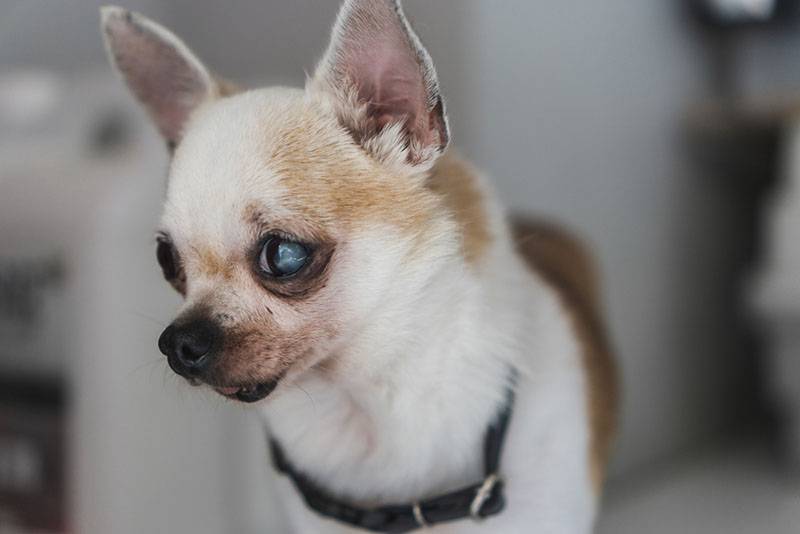
Other cataract symptoms may include:
Confusion and clumsiness, especially in new environments
Change in pupil color, usually from black to blue-white or creamy white
Reluctance to jump on furniture or in a car
Staining tears
Discharge from the eyes
Redness of the eyes or eyelids
Rubbing and scratching the eyes
Strabismus or frequent blinking.
Canine cataract is a progressive, irreversible disease. This means that once your pet develops a cataract, it cannot be reversed and will continue to progress. However, it can be managed or removed surgically.

Diagnostics
Cataracts can be suspected simply by examining the dog. The doctor will need to do a physical exam and probably use an ophthalmoscope to look into the eyes, as well as guide your dog through an obstacle course.
The veterinarian may also recommend several tests to make sure the cataract is not related to diabetes and that the animal is otherwise healthy. It is necessary to take blood and urine tests, and for older dogs, perform both an abdominal ultrasound and a chest x-ray.
After a clinical and ophthalmoscope examination, the veterinarian may want to perform an eye pressure test for glaucoma, as this condition can cause severe pain. This includes applying a local anesthetic to the eye and testing the pressure with a specialized device called a tonometer. This will need to be repeated as the cataract progresses, as glaucoma can occur at any time.
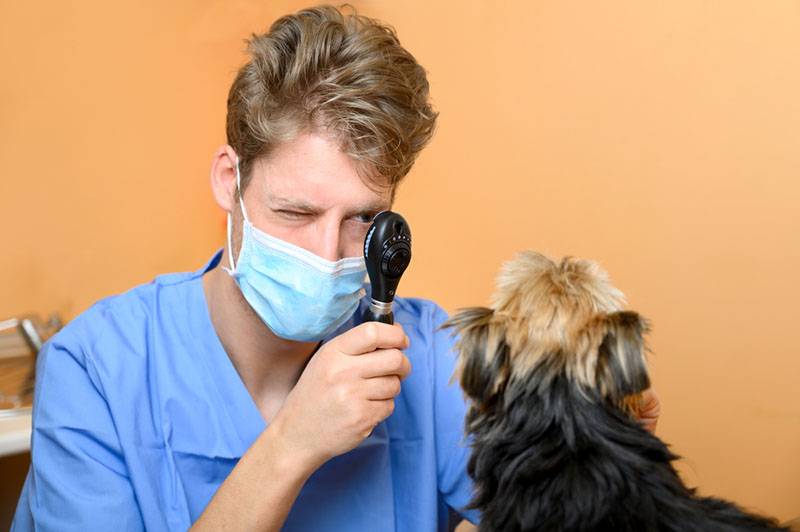
Cataract Treatment in Dogs
Cataracts in dogs are not treated with therapeutic drugs: drops, ointments or tablets. But you can manage the symptoms that occur.
The treatment of a cloudy lens is only surgical.
Cataract management includes monitoring the progression of the disease with regular veterinary check-ups and treatment of any secondary conditions that may result from cataracts, such as
uveitisInflammation or glaucomaHigh pressure inside the eye.
Regular eye drops may be required, and in some cases, you can apply a few drops a day. They won’t cure cataracts, but they can prevent complications.
Eye drops given to pets with cataracts may include: nonsteroidal anti-inflammatory drops, steroidal anti-inflammatory drops, anti-pressure drops for pets with glaucoma.
You will also need to monitor and care for your pet’s fading eyesight by following a set daily routine and trying not to take him anywhere with you to a new place or move furniture.
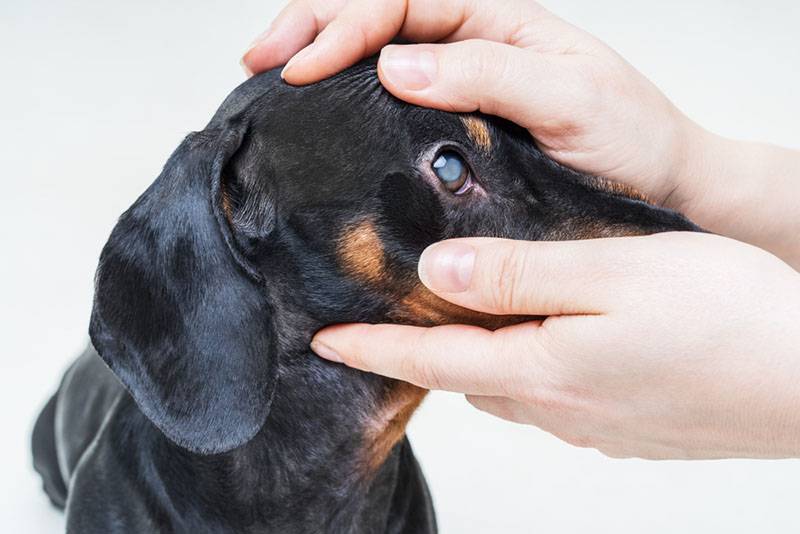
dog cataract surgery
Cataract surgery is usually performed by a veterinary ophthalmologist. First, several tests are done to make sure your dog is a suitable candidate for surgery. The dog must be able to tolerate anesthesia. The veterinarian will also want to make sure that cataracts are the sole cause of the vision loss.
Cataract surgery in dogs is recommended for pets that have both eyes affected to get the most benefit from the surgery.
The most common type of cataract surgery is called phacoemulsification. In this operation, the veterinarian passes a probe into the eye, which is vibrated to destroy the cataract, and then vacuums it out.
The operation has a 75-85% success rate. Your pet will then be able to see, but the dog may experience some visual impairments such as farsightedness. Sometimes an artificial lens is put in place of the old lens to improve the dog’s vision. But such an operation is not suitable in all cases.
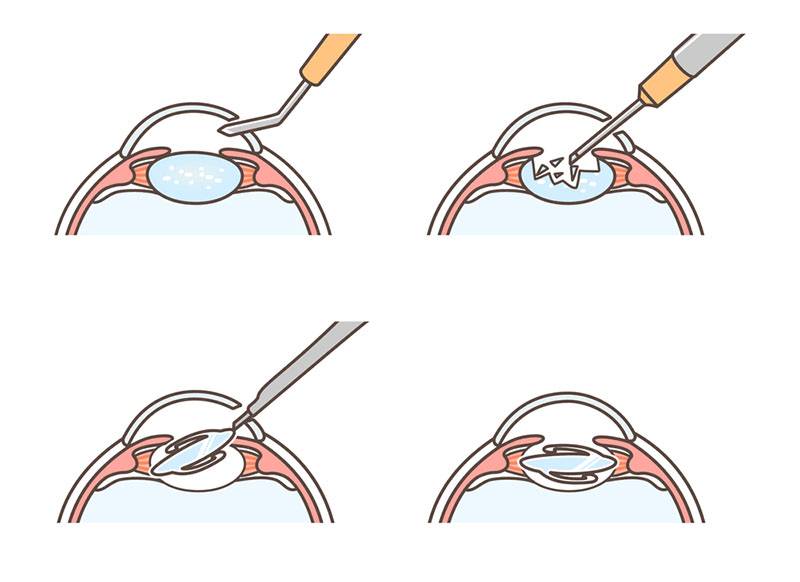
puppy cataract
Cataracts in a puppy are genetic in nature and can begin to develop from birth.
Babies with complete juvenile cataracts have poor vision and may start bumping into things as soon as they open their eyes. You may also notice that they have a white spot in the middle of the pupil.
Young cataracts affect more than 100 breeds, but the most commonly affected are:
Poodles (all sizes)
Boston terriers
French bulldogs
Staffordshire bull terriers.
If these animals inherit the cataract gene from their parents, they often begin to develop the disease as early as 8 weeks old and may be completely blind by 2-3 years of age.
Congenital cataract affects pets immediately at birth. The dog will be born completely blind. It only affects a very small number of dogs, but miniature schnauzers appear to have the condition more frequently than other breeds.
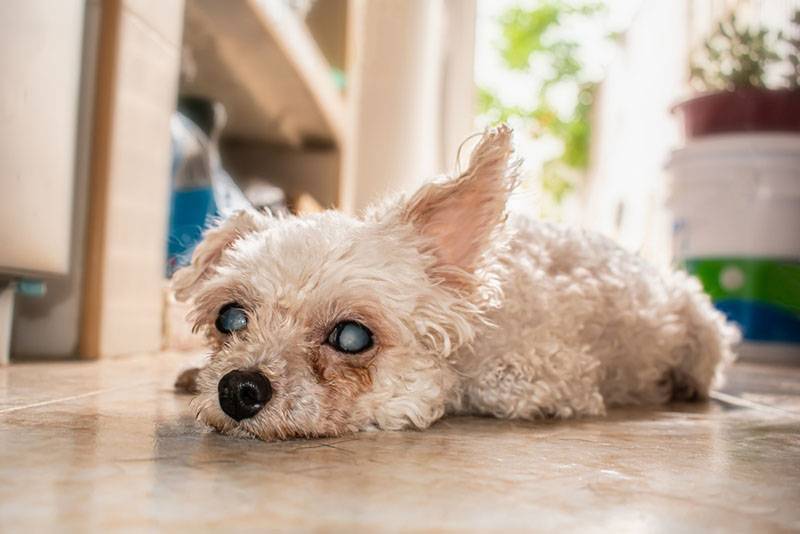
Prevention
Cataract prophylaxis may or may not be possible depending on the cause. Breeds predisposed to this disease are recommended to be purchased only from a verified breeder where both parents have been DNA tested for hereditary cataracts. This should reduce the risk that your animal will carry the gene and develop juvenile cataracts.
Unfortunately, the second most common cause of cataracts is old age, and there is no way to prevent the disease. Providing your dog with a healthy diet with plenty of vitamins can help, but this type of illness can be unavoidable.
Regular veterinary check-ups should catch signs sooner, allowing you to adjust your lifestyle to manage cataracts effectively.
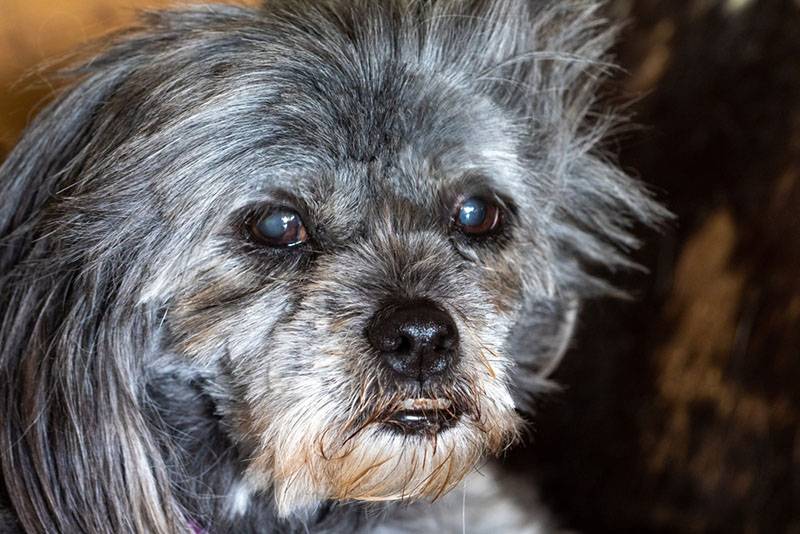
Home
A cataract is a clouding of the lens. It can be caused by genetics, age, or certain diseases.
Symptoms of cataracts are: decreased visual acuity, clouding of the lens and, as a result, a change in the color of the pupil from black to light, white.
If your dog suffers from diabetes, it is important to get the diabetes under control as soon as possible. This is the best way to reduce the risk of developing cataracts.
Surgery is the only way to treat cataracts. Surgery involves splitting and removing the lens from the eye.
Age-related cataract is the slowest progressive disease. Both you and your dog can live normal lives with minor changes.
Answers to frequently asked questions
Sources:
Gelatt Kirk, Plummer Karin “Veterinary Ophthalmology”, 2020
Mathes R. L, Noble S. J, Ellis A. E. «Leiomyoma of the third eyelid in a dog», Veterinary Ophthalmology, 2015



